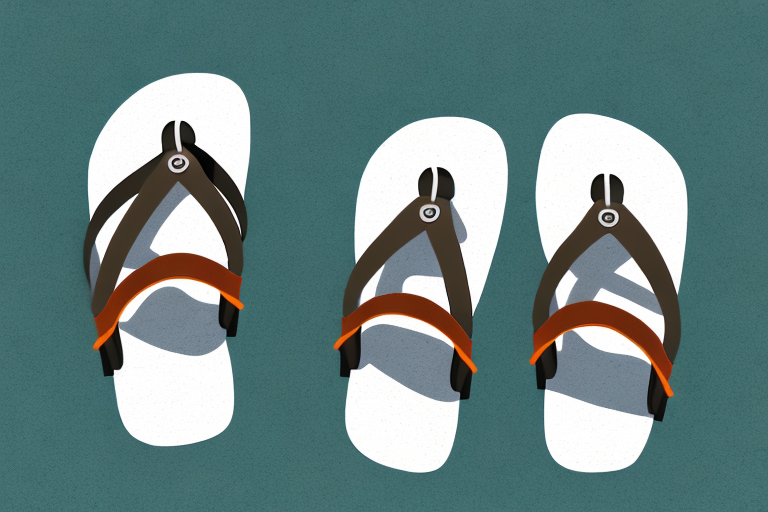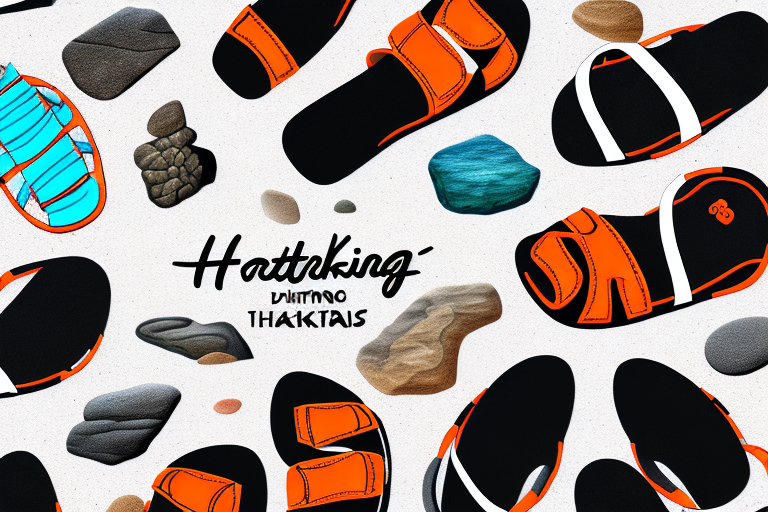Hiking sandals are a great choice for those who love the outdoors, offering protection, support and comfort – but only if you choose the right material. The right hiking sandal material will stand up to the rigors of climbing, wading and other terrain, while also offering ample ventilation to minimize blisters. From synthetic fabrics to natural materials, this guide will help you decide which is the best sandal material for your next outdoor adventure.
Pros and Cons of Different Material Options
The best material for your new sandals depends on where you intend to wear them. Certain materials have different pros and cons, so it’s important to take those into account. Synthetic materials such as synthetic rubber or synthetic leather may be good choices for durability, but could be too heavy for long-distance hikes or hot climates. Natural materials like leather or canvas offer lighter options, but may suffer from damages more quickly.
If you are looking for a more breathable option, then you may want to consider materials like mesh or canvas. These materials are lightweight and allow air to circulate, making them ideal for hot climates. However, they may not be as durable as synthetic materials. Additionally, if you are looking for a waterproof option, then synthetic materials are the way to go. Synthetic materials are usually treated with a waterproof coating, making them ideal for wet conditions.
Synthetic and Natural Fabrics
Synthetic materials like synthetic rubber offer excellent durability and water resistance, and can stand up to a range of terrains. Their main disadvantages are that they’re often heavier than natural fabrics, and can be less breathable. Natural fabrics like leather tend to be more breathable and lightweight, but also more expensive and prone to damage when exposed to water or dirt.
Weather Resistance of Materials
You should also consider how weather-resistant each material is. Synthetic materials such as synthetic leather and rubber tend to be more resistant to water and dirt than natural fabrics such as canvas or leather. They also tend to hold color better in the sun. Natural fabrics can often be treated with water-repellent sprays to make them more resistant, but even then they won’t be as good as a synthetic material.
Comfort and Support
Comfort and support are essential aspects of choosing the right sandals. If you’re looking for a sandal with arch support, a good foam insole will offer plenty of cushioning and shock absorption. Synthetic materials such as rubber or foam can also provide more responsiveness than natural materials like leather.
Durability and Lifespan
Durability is another important factor when choosing the best hiking sandal material. Synthetic materials such as rubber offer excellent durability, while natural fabrics such as leather may require more frequent repairs or replacements. In addition, the type of sole of the sandal can affect its longevity; rubber soles offer a longer lifespan than foam soles.
Breathability and Insulation
When considering the breathability of your sandal material, keep in mind that it affects how well your feet can handle long hikes. A breathable material will allow your foot to stay dry, cool and comfortable during tough treks. Synthetic materials such as synthetic leather can be great for breathability, while a lightweight foam insole can provide both insulation and breathability.
Cost Considerations
When it comes to the cost of your hiking sandal material, natural fabrics like leather will usually be more expensive than synthetic fabrics like polyester. However, if you’re looking for a lightweight option with plenty of breathability and support, the natural fiber might be worth the extra cost. Additionally, the type of sole you choose can affect the overall cost; for example, rubber soles are often less expensive than foam or cork.
Care and Maintenance Tips
For optimal performance and longevity, it’s important to take good care of your hiking sandals. For synthetic fabrics such as neoprene or nylon, use a gentle detergent and air-dry each time they get wet. Leather can be cleaned with a damp cloth and then treated with a waterproof conditioner. Be sure to inspect your sandals regularly to check for any damage, and replace them if necessary.
Review of the Best Hiking Sandals
If you’re looking for the best sandal material for your next outdoor adventure, there are plenty of options to choose from. Here is a selection of some of the best hiking sandals on the market:
- Teva Universal Strap-On Sandals: Made from waterproof synthetic leather, these mid-height sandals are perfect for long hikes. The soft foam insole provides plenty of cushioning, while the adjustable straps ensure a secure fit.
- Teva Riva Mesh Sandals: These lightweight sandals boast breathable mesh fabric, an EVA footbed for support and cushioning, and an outsole with traction pods.
- Merrell Leather Thong Sandals: Featuring a full-grain leather upper, these thong sandals provide plenty of support, cushioning and traction. The footbed is treated with Aegis antimicrobial technology for added protection.
No matter what material you choose for your hiking sandals, it’s important to read reviews, try them on and make sure they feel comfortable. With the right material — and plenty of care — your hiking sandals should last you through years of outdoor adventures.



